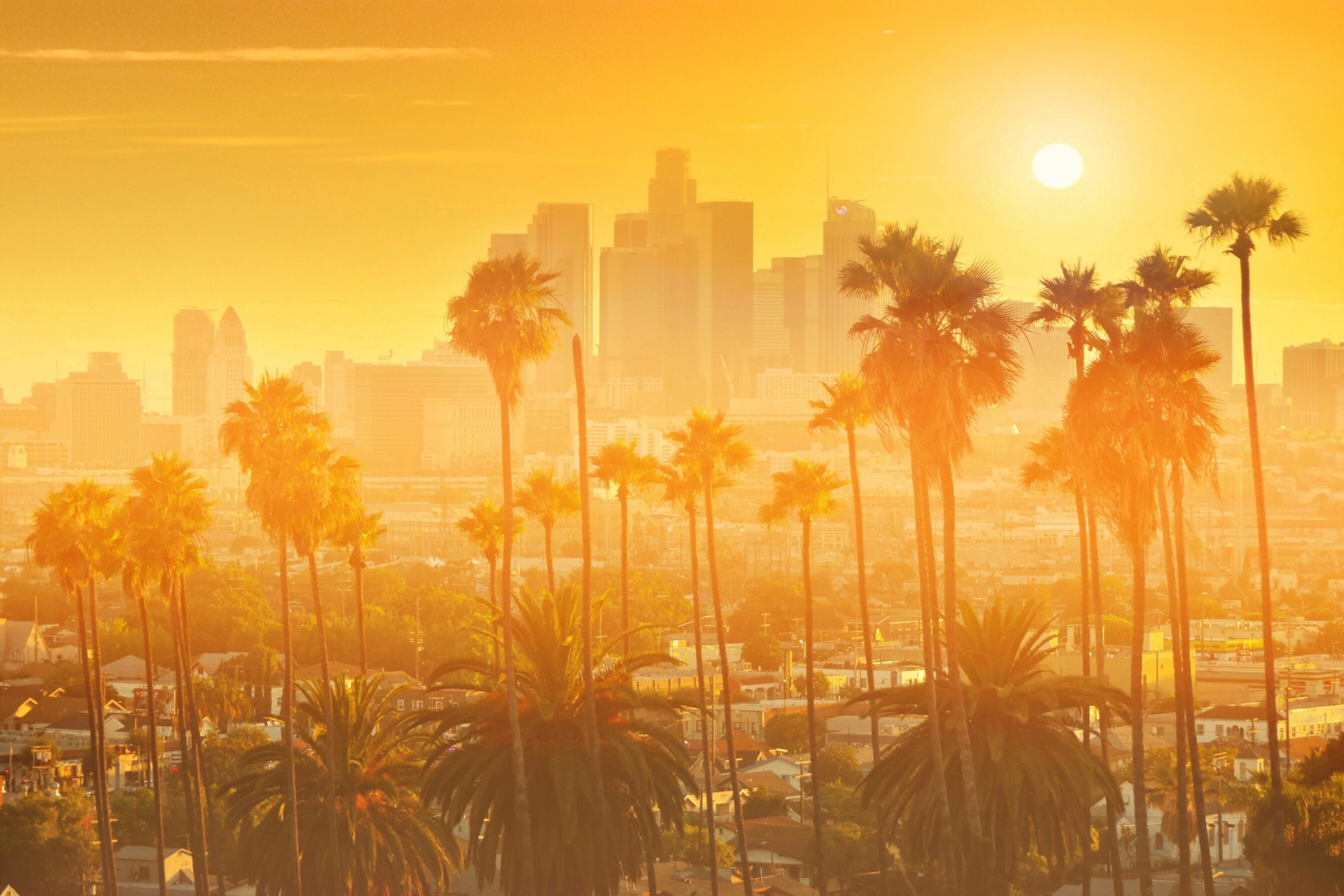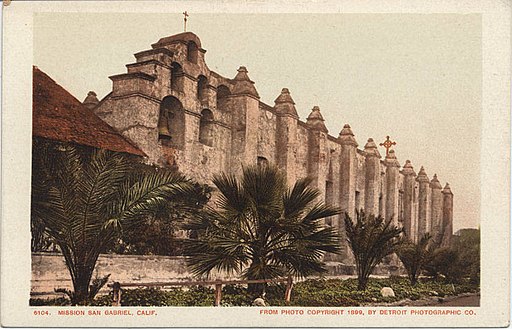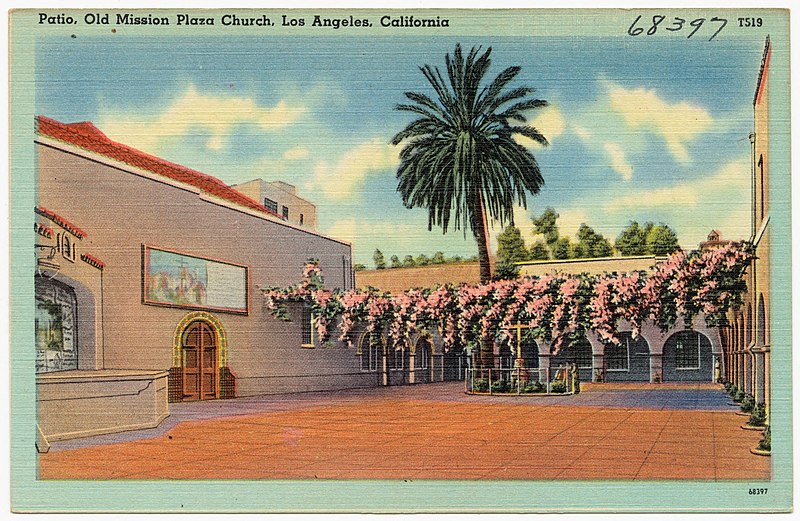For those not born in LA, the first moments of arriving in the city typically result in some cognitive dissonance. Especially the closer you get to Hollywood. Yes, the tourist hub of the city is a bit more in-your-face and raw than the silver screen leads you to believe. But you can’t fault anyone for false advertising when it comes to those precariously swaying Los Angeles palm trees. The palm is so intertwined with the city’s aesthetic that it can be hard to remember they’re not native. Rather, the palm forest we call home was cultivated by the will of man and maintained by the sheer resilience of the monocots to survive outside of their native environment. Well, that and a lot of water. So, where did the palms come from? And, if they’re not native, are they really here to stay?
Update – April 2024:
With higher winds then usual whipping through Southern California this year, downed palm tree fronds are more rampant. Surprisingly, these fronds are so densely fibrous that they can’t always be handled like typical landscaping waste. However, if you have palms in your yard, you are responsible for the disposal of downed fronds. Check with your county to determine the suggested method of disposal. Some counties regard palm tree fronds as trash. Others have the means to turn them into mulch.
Religion and Romance at the Edge of the Frontier
It’s hard for us to imagine Los Angeles before the palm trees. While many erroneously liken it to a desert in those days, that isn’t quite an accurate portrait. Rather, it was a diverse landscape of flowing grasslands, oak forests, and resilient chaparral.
During the 18th century, Spanish missionaries on a crusade to bring their religion to the masses found themselves pushing into the Californian frontier. It’s believed that these missionaries introduced a variety of palms to Southern California. For them, the palm was a plant of religious significance.
Regular readers of our Architecture 101 blogs may recall how the missionary life was romanticized in the publication of Helen Hunt Jackson’s 1884 novel Ramona. Therefore, though the original missions crumbled and faded, the palm persevered as a symbol of Southern California’s new exotic character.
It was during this time that people from across the country were flocking to the region. Victorian architecture and manufacturing made it easy to create housing rather quickly. Others adopted the Mission Revival style, committing fully to the exotic promise of the frontier.
Los Angeles Palm Trees as a Status Symbol
Yet, it was the leisure class that elevated the palm to a symbol of status and glamor. These people were carving their own oasis, nature be damned. And naturally, they wanted these oases lined with Los Angeles palm trees.
Through the turn of the century, the city’s wealthy elite used palm trees (preferably Canary Island date palms) to add natural flourish to their estates. As Hollywood’s Golden Era took route, so did the palms. Soon, the film industry blossomed just as decadently.
The Origins of LA’s Palm Forest
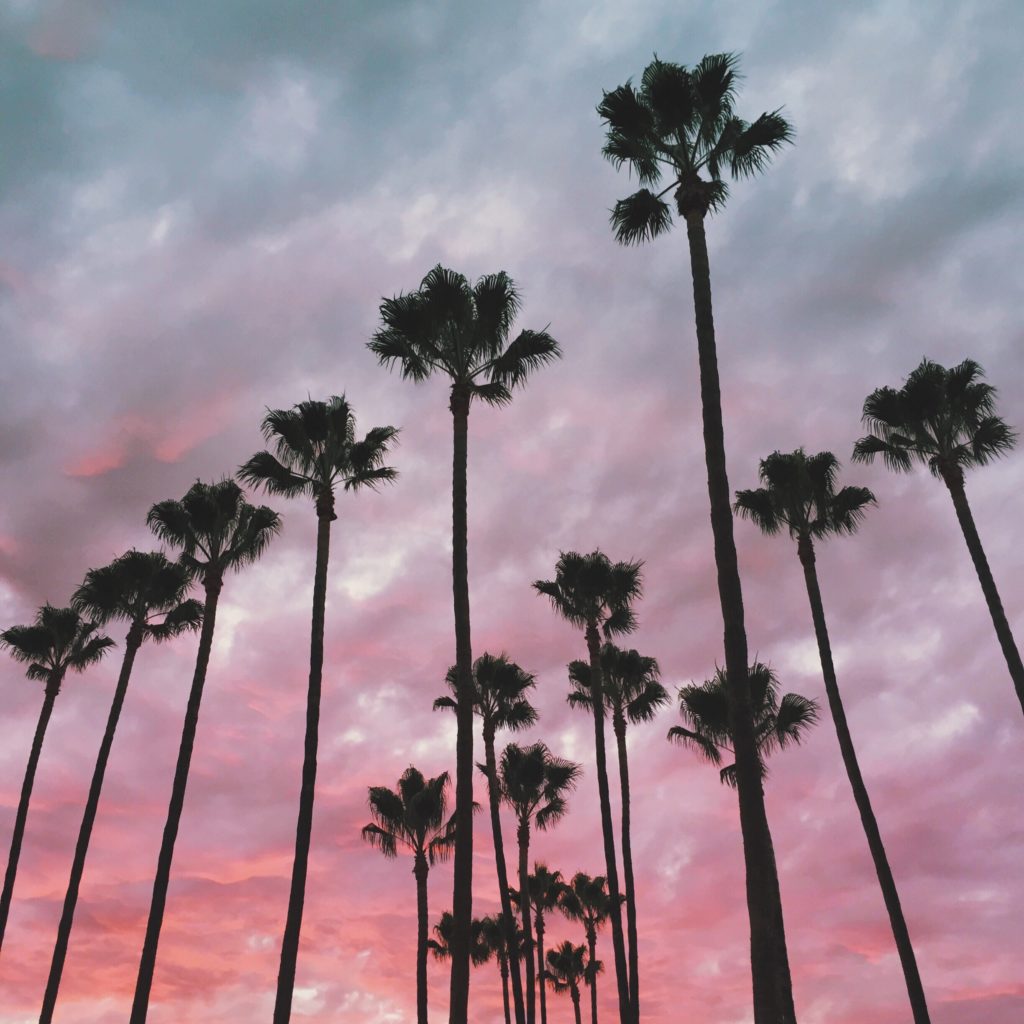
But the palm forest’s true scope wasn’t realized until the early 1930s during preparations for the 1932 Olympics. As part of a work relief program, workers were hired en masse to plant thousands upon thousands of palms. While 25,000 Los Angeles palm trees were planted in anticipation of the games, a potential total of 40,000 were laid as part of the overall program.
The palm trees were easy enough to plant because of their unique root system. As monocots, which are more closely related to grass blades than trees, palms’ roots run neither deep nor wide. Work crews with relatively little experience could quickly plant Los Angeles palm trees across the city at a rather brisk pace. By the end of the 1930s, the palm forest was more or less complete.
The Most Common Types of Los Angeles Palm Trees
While a wide variety of palms have found welcoming enough soil in the city, most of the Los Angeles palm trees you see can be credited to one of three types.
The Mexican Skyduster
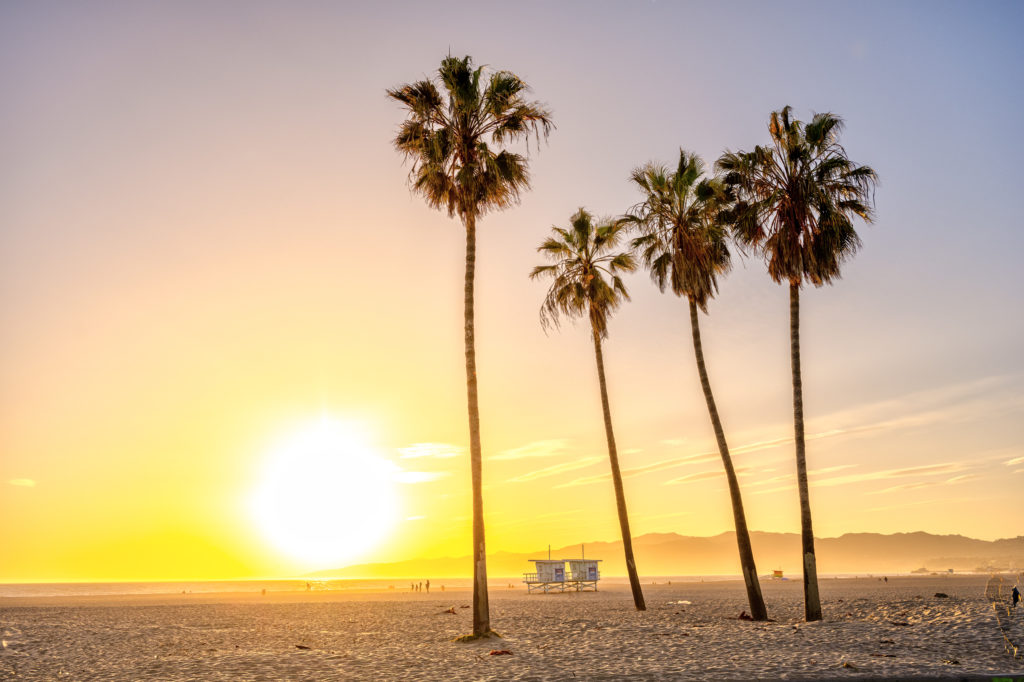
Also referred to as the Mexican fan palm, the Mexican skyduster thrives in LA. Unfortunately, it’s nearly been wiped out in its natural habitat. Mexican skydusters are the most populous of the Los Angeles palm trees and the ones so intrinsically linked to the city’s visual aesthetic.
- Capable of growing up to 50 palm leaves per year
- Dead palm leaves hang like a brown beard beneath the green crown if not trimmed
- Originally from Baja peninsula, but are nearly extinct in their native region
- Can reach heights up to 100 feet
The California Fan Palm
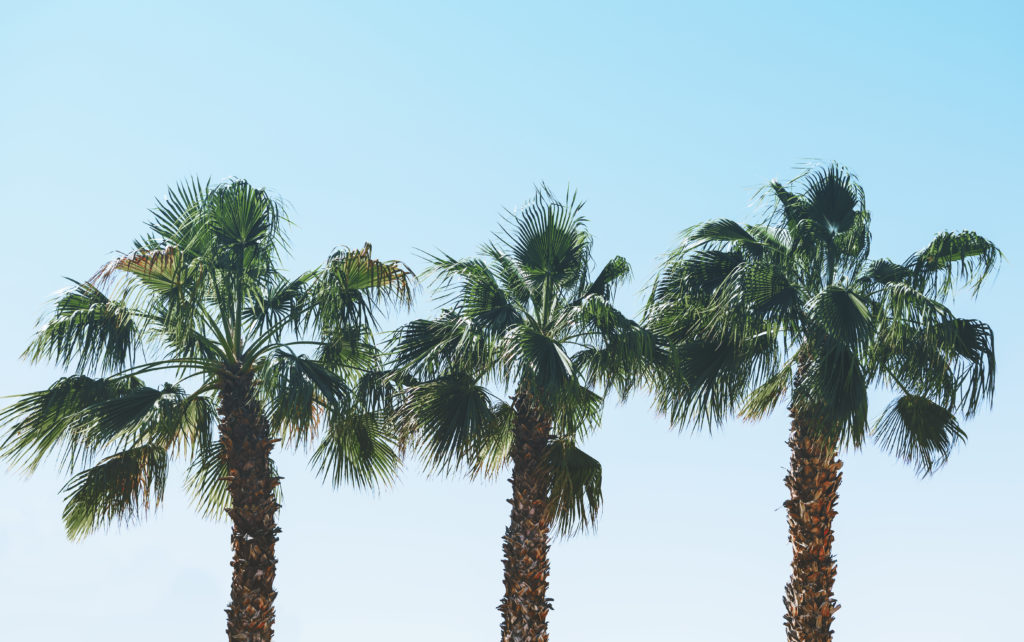
When compared to the Mexican skyduster, the California fan palm looks short and stout. While the only of the three major Los Angeles palm trees to originate in California, this palm is still not native to the city. Rather, it’s most commonly found near oases in the nearby Mojave and Sonoran Deserts.
- Historically used as village markers by indigenous California tribes
- Can only reach about 66 feet tall, but 20 feet wide at the crown
The Canary Island Date Palm
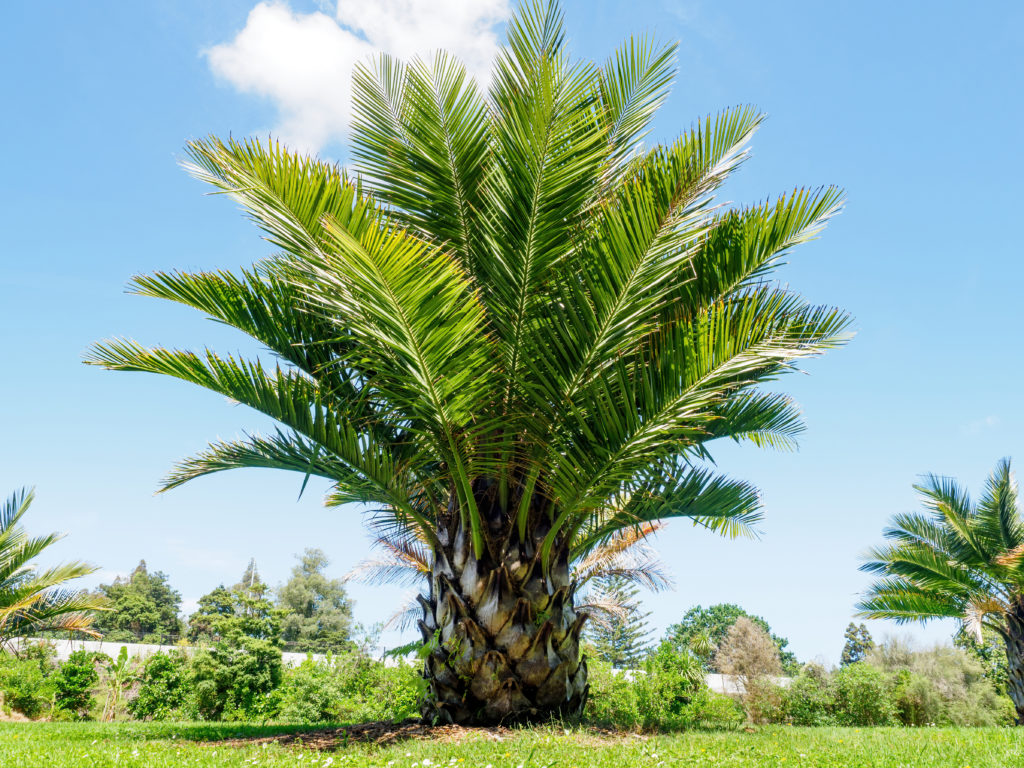
Sometimes playfully referred to as “pineapple palms”, Canary Island date palms feature trunks reminiscent of a pineapple. This exotic variety was favored by the Hollywood elite at the beginning of the 19th century.
- Most common palms used by the city’s wealthy luminaries at the beginning of the 19th century
- Can often feature vibrant flowers and palms that resemble plumage
- More vulnerable to the South American palm weevil than other varieties of LA palms
The High Cost of Los Angeles Palm Trees
Unfortunately, LA’s palm-heavy look comes at a price. The popularity of Los Angeles palm trees comes from a purely decorative benefit. After all, these palms don’t bear fruit, nor do they excel at providing significant shade. Other consequences of the city’s palms include their propensity to catch fire, and their reliance on immense quantities of water.
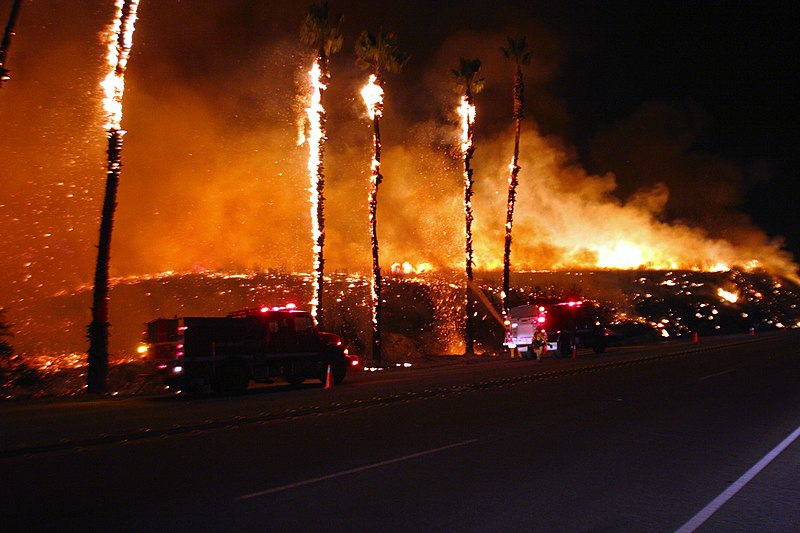
But like all living things, palm trees don’t have an infinite lifespan. And many of the Los Angeles palm trees planted in the 1920s will be lucky to see another 50 years. When the palm trees begin to die, it’s unlikely that the city will be able to retain its distinct aesthetic.
With hotter, longer summers, the iconic palms could be replaced with shade-bearing or drought-resistant varieties instead. Decades from now, new generations of Angelenos will likely be swapping out fashion for function. In effect, we very well could be in the last decades of LA’s most legendary look. So, appreciate them while you can!

